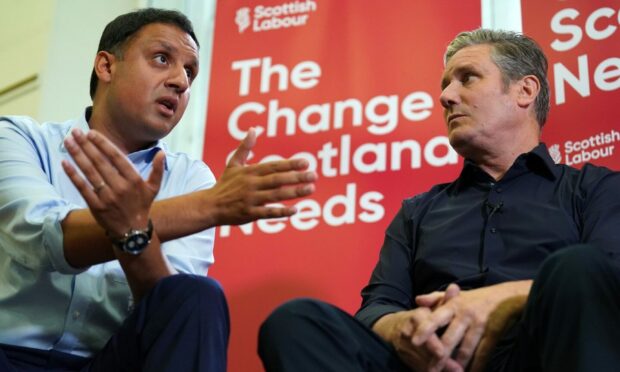A deeper look at election opinion polling should prompt caution by Labour ahead of the General Election, a Dundee University expert tells our weekly politics podcast.
Sir Keir Starmer currently enjoys a 20-point lead over Prime Minister Rishi Sunak’s Conservatives, putting the Labour leader odds-on favourite to become the next resident of Downing Street.
But Professor Jennifer Lees-Marshment, an expert in political marketing and management, says a deeper look at public opinion should prompt caution.
In an interview for The Stooshie – The Courier’s politics podcast – Prof Lees-Marshment argues: “When you look at more detailed polling, you see that although Keir Starmer is ahead of Sunak, he’s not very popular.”
Elsewhere in the interview, Professor Lees-Marshment discusses:
- The SNP’s risky strategy on making the election about independence.
- The lack of training for MPs to actually govern.
- Why Sir Keir Starmer hiring former civil servant Sue Gray was a shrewd move.
A YouGov poll published on April 12 suggested Labour would win 45% of the vote with the Conservatives languishing on 19%
Professor Sir John Curtice, another Scottish polling expert, predicted Labour had a 99% certainty of forming the next government.
But Prof Lees-Marshment said party strategists may find some reason to be concerned.
She highlighted results which indicate that while the public seem to prefer Labour to the Conservatives, expectations and enthusiasm for the the party are low.
This stands in contrast to pre-1997 polling, when Tony Blair swept his party to a landslide victory.
She said: “My experience in elections has taught me never to be certain. But if we look at more detailed polling it’s not as clear cut.
“Voters are extremely dissatisfied with the Conservatives. Not just in that sense of its time for a change, but also the turbulence in terms of leadership, questions over their management of the Covid pandemic and so on.
“So they are very dissatisfied and all the polling data shows that. Not just Conservative versus Labour, not just the leader, but is the country heading in the right direction? A large number think it’s not.
“However, that doesn’t mean they are satisfied with Labour as an alternative offering.”
Prof Lees-Marshment pointed to the popularity of Tony Blair and Jacinda Ardern in New Zealand before they came to power.
She added: “Normally for a new leader coming into power they are flying high in the polls and they have what we call brand likeability.”
But she warned Labour that polling suggest this is not the case for Sir Keir.
Listen to The Stooshie – the weekly Scottish politics podcast from The Courier
Keep up to date with all our regional and national politics coverage on our dedicated pages here.
And stay informed by signing up to our daily politics newsletter.



Conversation